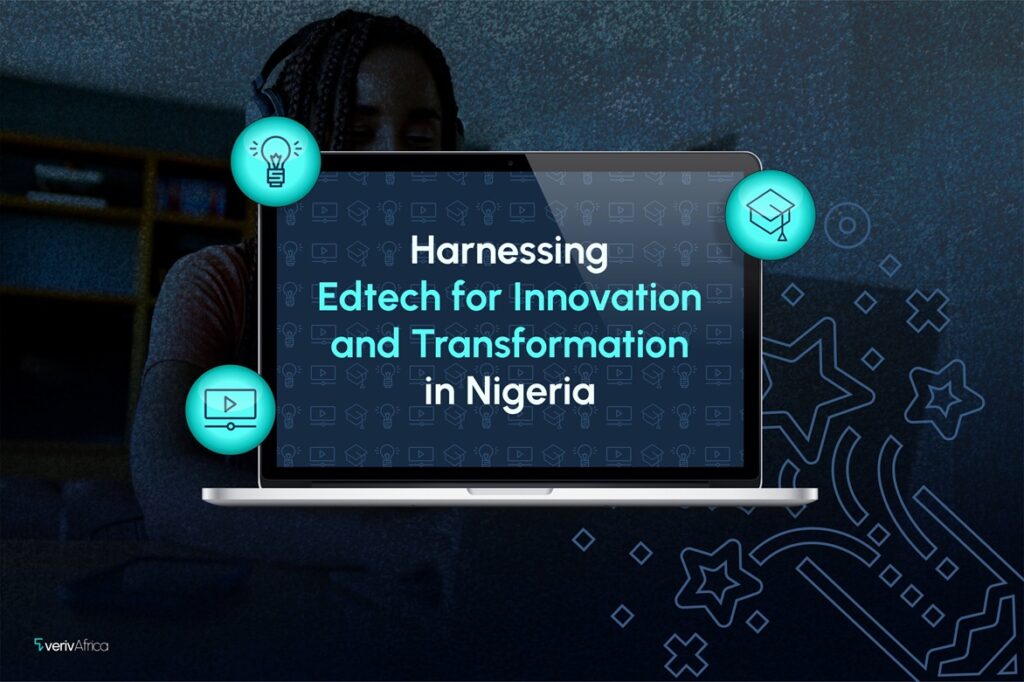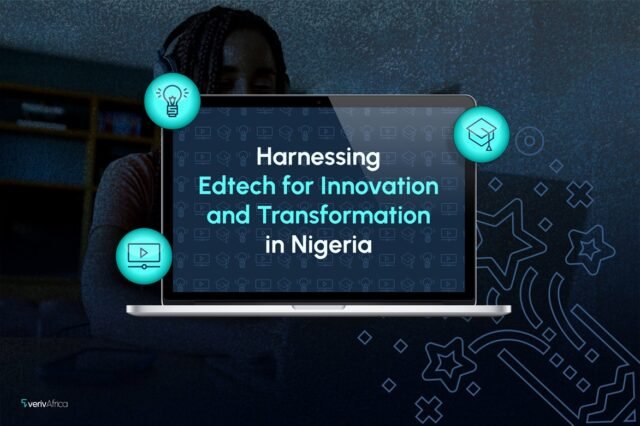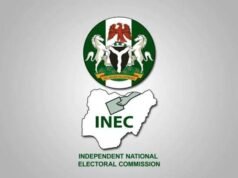In recent years, Nigeria has witnessed a remarkable surge in digital learning initiatives. From mobile learning apps to AI-powered classroom tools, a new wave of innovation has begun reshaping the country’s education sector. But while these developments show promise, deep-rooted structural issues persist—revealing a widening operational gap that now demands urgent, coordinated regional action.
Table of Contents

A Nation of Learners—Left Behind
With a population exceeding 200 million, Nigeria is home to Africa’s largest youth demographic. Over 60% of the population is under the age of 25, and the need for widespread, quality education has never been greater.
Yet, millions of Nigerian children remain out of school—an estimated 10.5 million according to UNICEF. Many more attend under-resourced schools with no access to digital tools, electricity, or trained educators. Despite ambitious Edtech efforts, learning outcomes remain alarmingly low, especially in rural and underserved communities.
The COVID-19 pandemic further exposed systemic cracks. During lockdowns, Edtech platforms became the primary mode of instruction for many students. However, access was far from equal. Urban centres like Lagos and Abuja adapted quickly, while remote areas fell further behind—lacking devices, data, and even basic internet coverage.
Understanding the “Operational Gap”
The term operational gap refers to the space between innovation and actual impact. Nigeria’s Edtech ecosystem is growing, but key enablers—like policy, power infrastructure, and digital equity—haven’t kept pace.
- Inconsistent Infrastructure: Many public schools, especially outside major cities, struggle with irregular electricity and poor broadband. Students often can’t charge devices or access lessons online.
- Policy Disconnection: There’s no unified national framework guiding Edtech integration. States adopt divergent strategies, and many schools operate without clear digital learning policies.
- Digital Literacy Divide: Many students—and even teachers—lack the digital skills to use Edtech tools effectively. Gender inequality worsens this, with girls often denied access to mobile phones or the internet in conservative regions.
- Limited Scalability: While startups are building exciting solutions, most remain urban-centric. Their platforms rarely penetrate deeply into rural communities where they’re most needed.
These result in an Edtech sector with incredible potential—but limited real-world reach.

Bright Spots in Nigeria’s Edtech Scene
Despite these barriers, several Nigerian innovators are reimagining education delivery with smart, locally relevant tools.
uLesson, founded by tech entrepreneur Sim Shagaya, delivers curriculum-aligned lessons through mobile apps, and even includes offline features for students with limited internet.
Teesas, another rapidly growing startup, offers video lessons in both English and major local languages—bridging cultural and language divides in early education.
There’s also Schoola, based in northern Nigeria, which provides AI-assisted teaching aids for under-resourced classrooms. Its tools help teachers auto-generate lesson plans and quizzes tailored to local needs.
Grassroots efforts like DigiLearn and AREAi are notable too. These initiatives deliver educational content via SMS and USSD, allowing even students without smartphones to engage with core subjects.
Yet, for all this innovation, these solutions still reach only a fraction of Nigeria’s 40 million school-age children.
The Call for Regional Collaboration
Experts now argue that isolated efforts won’t solve the scale of Nigeria’s education crisis. What’s needed is regional coordination—a unified, multi-state approach that prioritises access, affordability, and adaptability.
1. Unified Digital Education Framework
The federal and state governments need to harmonise Edtech policies and funding strategies. A national digital education framework—adaptable at the local level—could ensure all states are building toward the same goals.
2. Infrastructure Pooling
Collaborating on broadband expansion, solar-powered classroom hubs, and device distribution could create cost-sharing advantages and expand reach across multiple regions simultaneously.
3. Shared Curriculum Platforms
Instead of each state reinventing the wheel, regional consortia could co-develop digital curriculum platforms, integrating national guidelines and local languages.
4. Teacher Development Networks
Edtech can only succeed with capable teachers. A regional teacher training initiative—perhaps through open digital platforms—could ensure educators in every corner of Nigeria can access modern pedagogical tools and training.
5. Gender Equity Campaigns
Collaborative campaigns targeting digital inclusion for girls and marginalised students could amplify reach and cultural relevance. Civil society and religious organisations have a key role to play here.
Expert Voices: “Innovation Without Access is Failure”
At a recent education summit in Abuja, several Nigerian educators and technologists emphasised the importance of contextualised technology.
Dr. Modupe Akinola, a digital literacy researcher, remarked:
“We need to stop chasing Silicon Valley models. Nigerian students need tools that match our environment—low data, low power, but high engagement.”
Gideon Olanrewaju, founder of AREAi, shared a blunt truth:
“We’ve created dozens of Edtech apps—but if kids in Oyo or Zamfara can’t use them, we’ve failed.”
Their message was clear: without intentional infrastructure and policy support, Edtech in Nigeria may never fulfil its mission.
Learning from Neighbours: A West African Model?
Other West African countries, like Ghana and Senegal, are also navigating similar challenges. Cross-border partnerships—sharing tools, frameworks, and even pooled procurement of devices—could yield mutual benefits.
The African Union’s Digital Education Strategy 2030 calls for this kind of integration. Nigeria, as a continental leader, has the influence and obligation to lead such initiatives.
In fact, regional Edtech hubs—co-managed by clusters of West African nations—could drive innovation while reducing duplication and cost.

What’s at Stake
Failure to address these gaps risks deepening inequality and leaving millions of children behind. It may also widen the AI and digital divide, as wealthier schools access advanced tools while public institutions stagnate.
However, if Nigeria succeeds, the payoff could be enormous: a digitally literate generation, empowered teachers, and scalable solutions that improve lives across Africa.
Conclusion
Nigeria’s Edtech promise is still alive—but its power lies not in apps or algorithms, but in collaboration. By working regionally—across states, sectors, and borders—the country can finally transform education for all.
Let’s move beyond pilot projects and PR launches. It’s time to build an inclusive, operationally sound Edtech ecosystem that reaches every learner, from Lagos to Lokoja, Yobe to Yenagoa.
Join Our Social Media Channels:
WhatsApp: NaijaEyes
Facebook: NaijaEyes
Twitter: NaijaEyes
Instagram: NaijaEyes
TikTok: NaijaEyes
READ THE LATEST EDUCATION NEWS





